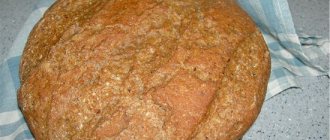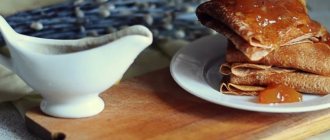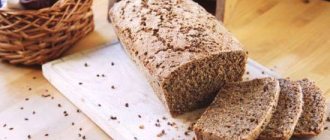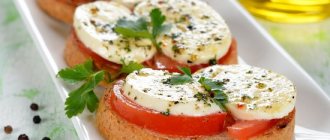A Whole Grain Bread Baker's Secret Discoveries
Whole grain bread is baked from sprouted wheat seeds. For preparation, take peeled wheat grains in the active stage of germination; water, salt, and yeast are added to them; famously healthy bread is baked from these raw materials.
The selected and prepared raw materials for kneading the dough fundamentally distinguish whole grain bread from those made from regular flour, even if coarse flour was used. Baker's flour is made from refined grains, which halves the content of useful elements in its composition.
The secrets of baking while maintaining the healing properties of the finished product are the main directions of development of the modern baking industry.
You will learn from the article about what affects the quality of whole grain bread, whether it is really good for health, and what new products bakers have prepared.
Special properties of baked goods made from sprouted grains
High-quality whole grain bread is a product of biological and nutritional value. The original technology of its preparation makes it possible to preserve proteins, amino acids, vitamins, dietary fiber, and other micro and macroelements in the finished product.
The essence of preparing raw materials for baking is that the grain is brought to the germination stage by increasing humidity and ambient temperature, and then grinding it on a disperser until a dough mass is formed. The further technology coincides with baking from regular flour: kneading the dough, the fermentation stage, cutting and proofing the molded products, baking at 200 degrees for 40-50 minutes.
The process of soaking the grain is the main one in the preparation of the dough, lasting from 18 to 48 hours, when the grain is soaked in water. Soaking time is reduced if the grains are irrigated with whey, kefir, coriander water and other natural antibacterial additives. He contains:
- Improved formula of vitamins B, E, PP
- Easily Digestible Fermented Proteins
- Well baked
- Sweet and sour taste
- Plastic when compressed
Important: when purchasing, pay attention to the composition. The usual recipe for whole grain bread includes at least 85 percent of sprouted grains, 14 percent of wheat or rye flour, and 1 percent of traditional additives, depending on the variety.
How to distinguish whole grain bread
Grain bread is very good for health, for maintaining a fit figure and for good daily well-being. One slice of whole grain bread contains about three grams of fiber, essential for proper intestinal function. You can distinguish it by reading the label; if whole grain is listed first on the list, then the product is worthy of being put on the table. Flour for such bread is made not from grains peeled from coarse layers, but from whole grains, which means that all active biological components are preserved in it.
But indicating the naturalness of the raw materials cannot say anything. The flour used for baking is not synthetic in any case, be it from rye or wheat raw materials. After all, the main thing is not written anywhere that a particular bread is whole grain. The inscription “natural” does not mean that the grain for flour has not been cleared of the valuable germ and rough shells. Promising nutrient-rich bread or marketing a multi-grain product is no substitute for the single word “whole grain.”
Bread with nuts and seeds
Baked goods strewn with golden-brown seeds or nuts will certainly leave the impression of a healthier food product than a regular white loaf
However, it is important to remember here that any additional ingredients, especially highly nutritious nuts, sesame seeds, sunflower or pumpkin seeds, become a significant addition to the energy value of the bread itself. For example, a 20-gram portion of sunflower seeds for sprinkling, placed in the dough or on the crust of a bun, will increase its calorie content by as much as 120 kcal
In addition to the excess calorie content, bread with seeds, dried fruits or nuts becomes much more expensive, but still does not become a dietary and healthy product
Therefore, when purchasing, it is important to pay attention to the calorie content of the finished product, and also not to be lazy and study the list of ingredients, where whole grains should be listed first. If something is wrong, it is better to put the bread back on the shelf. After all, it is most likely made from ordinary flour and is only disguised as a healthy product due to all sorts of additives
After all, it is most likely made from ordinary flour and is only disguised as a healthy product due to all sorts of additives.
What to pay attention to
When examining the packaging of bread, you should pay attention to the presence of fats in the product. Not only that, both vegetable and all animal fats are a source of additional calories
Bakery products sometimes contain hydrogenated oils, cooking or palm fat, margarine or some other types of oil that are not very healthy. It is better to find dietary bread with a minimum amount of fat in its composition.
Yeast bread cannot contain sugar, but if the label indicates sugar syrup, caramel or molasses, then one can doubt the dietary purpose of such bread and its belonging to healthy eating products. In addition to extra calories, introducing it into the diet will inevitably cause irritation of the pancreas, but it will obviously not add health.
Bakers cannot do without salt. It is added not only to improve the taste, but also to ensure the proper functioning of the yeast in the dough. But you should choose the bread where salt is listed in one of the last places in the list of ingredients, and exactly after the most important flour and water.
Healthy baked goods, which are a source of fiber, healthy carbohydrates and antioxidants, vitamins and minerals, are necessarily baked from flour that is made from whole grains, not degermed and not peeled from the coarse bran shell. A careful reading of the list of ingredients on the label will help you find the right bread.
07 Jul 2020 foodhranenie 84
Eating healthily or health in bread dimension
Scientific research has proven the dietary properties of whole grain bread:
- Reduces blood insulin levels
- Reduces the risk of cardiovascular diseases
- Systematic consumption lowers blood pressure, cholesterol, and reduces obesity
- Beneficial for people suffering from gastrointestinal sluggishness
Additional properties:
- Promotes a feeling of satiety
- Improves mood
- Recommended for people suffering from vitamin deficiency
Taking care of your health
Baked products made from whole grains are not harmful to health, but there are some contraindications.
- Wheat, for example, is contraindicated for people intolerant to gluten. Wheat bread made from unrefined grains contains a high content of gluten, a water-insoluble protein.
- Not recommended for people with diseases of the gastrointestinal tract, as it causes irritation of the mucous membrane. However, for people with a healthy stomach, on the contrary, it is necessary: it improves peristalsis, does not create a feeling of heaviness, and is easily digested.
Important! For people who are gluten intolerant, whole grain corn bread is more suitable.
For those on a diet
It is believed that whole grain products are also useful because they help burn fat while simultaneously saturating the body with the necessary energy.
Calorie content depends on the composition of the raw materials. To improve taste, manufacturers bake bread products by mixing various grains, creating unique mixed grains.
Depending on the added grains, whole grain products have different caloric content and energy value.
Calorie content: ranges from 220 to 250 kilocalories per hundred grams of product. Additives in the form of nuts, sesame or other seeds increase calorie content.
Traditional whole grain bread contains approximately the following set of nutrients per 100 grams of the finished product: high carbohydrate content - about 45 grams, protein 9.6 grams, fat 1.4 grams, in total it contains 180 kilocalories.
By composition:
- water from 36 to 42 grams,
- starch about 43 grams;
- amino acids are 2.3 grams with ash content (composition of microelements and minerals) 1.5-2 grams,
- organic fiber – 6 grams.
The benefits and harms of multigrain bread for women
This product effectively cleanses the gastrointestinal tract of harmful substances due to its high fiber content. In addition, multigrain bread has a relatively low calorie content and is approved for consumption by people suffering from excess weight. The beneficial substances in this product have the following positive effects on the woman’s body:
- strengthen hair, skin and nails;
- help with diabetes;
- reduce the likelihood of the occurrence or development of malignant neoplasms;
- prevent anemia;
- strengthen bones and muscles;
- maintain optimal blood pressure levels;
- help with apathy, depression, insomnia and chronic fatigue;
- prevent constipation and intestinal obstruction;
- strengthen the heart;
- help with atherosclerosis;
- increase visual acuity;
- improve memory;
- slow down the aging process of cells;
- promote rapid healing of scratches and cuts;
- strengthen the immune system;
- maintain normal hormone balance;
- minimize the symptoms of menopause.
Read: Benefits and harms, what is hearth bread
It should be borne in mind that such bread can harm the intestinal walls in the presence of serious gastrointestinal pathologies. It is not recommended to eat the product if you have dysbacteriosis. Multigrain bread is contraindicated for infections of the digestive system, gastritis, peptic ulcers and intestinal adhesions.
What is stronger and what is more useful?
If you compare whole grain bread with other types of baked goods, judge for yourself.
- One hundred grams of a white loaf contains 242 kcal, and a loaf or baguette contains 260-262 kcal; at the same time, the protein content is increased to 8.12 grams, carbohydrates to 50 grams, and more than 2 grams of fat.
- A loaf of rye flour contains: 40.9 grams of carbohydrates per 100 grams of product, 6.90 grams of proteins, 1.30 g. fat The calorie content of black rye bread is about 202 kilocalories.
- The nutritional value of a bun made from corn flour, for example, will be much higher: per 100 grams of product it contains 44 grams of carbohydrates, more than seven grams of fat, about 7 grams of proteins, and nutritional value - 266 kilocalories.
With different compositions of breads, the main thing is preserved: the undoubted nutritional and energy value of this product, indispensable for a healthy diet.
It's easier to choose a bride
How to choose the right whole grain bread in the store. Differences to pay attention to when choosing:
- on the packaging, find a note stating that this is whole grain bread, indicating the composition;
- pay attention to whether there are any chemical antimicrobial additives; it is better if natural antiseptics were used when fermenting: milk, kefir whey, coriander infusion, silver;
- check for compliance with GOST 28808-90 or the manufacturer’s specifications (technical conditions);
- the bread is elastic, well baked, the color ranges from yellow to grayish-brown;
- pay attention to the composition of sugar and starch if you choose a dietary variety;
- Baking flour is often added to whole grain bread to improve taste. The presence of flour should not exceed 50 percent.
Corn or crumb: eating right
- Freshly baked bread, including whole grain bread, should “rest”, lie down, and cool after baking. It is not recommended to eat it hot; it is difficult to digest, harms the body, and is dangerous for gastritis or peptic ulcers.
- The combination with potatoes is harmful, especially for people with high levels of insulin in the blood, since starch consumption doubles.
- For proper nutrition, rye bread is eaten in combination with meat or fish; baked with nuts - perfect for breakfast in the form of toast.
- Taking care of your health, eat whole grain bread with fresh vegetables - this is a complete fortified food.
- The crust contains more vitamins, the crumb contains more proteins, fats and moisture.
Important! You should not eat moldy bread. Poorly baked product is not recommended for consumption.
Choosing healthy bread
Very often, manufacturers write on the packaging the names “Diet”, “Grain”, “Healthy” and a large list of ingredients in order to confuse the buyer. But be careful. Wheat white bread
- White wheat bread contains a large amount of calories and starch, contributes to a sharp increase in blood sugar levels and subsequently provokes an acute feeling of hunger. White bread in your diet guarantees overeating.
- To “hide” regular flour, manufacturers can write on the packaging: “multigrain” or “multi-grain”, “natural rye”, “natural wheat”, “enriched flour”.
- If you do not want to deny yourself the pleasure of eating white bread, then buy it, at least with the addition of flax and sunflower seeds, nuts, oats, millet or buckwheat grains, dried fruits, seeds and vegetable additives. In addition to starch and calories, such additives will provide useful fiber. But do not forget that such bread will still not become dietary.
- Buying bread with grains, seeds and nuts adds extra calories. A simple example: we bought a “healthy” bun with sunflower seeds - 10 grams of sunflower seeds in total, and added 60 calories to the bun...
- When reading the ingredients on the package, immediately set aside the bread that says: hydrogenated oils or fats, shortening, margarine, simple syrup, caramel and molasses. All these ingredients provide additional calories. Basically no nutritional value, just harm.
- Salt should be the last thing listed on the bread package, well, at least after water and flour; such bread has the least amount of salt.
Black, rye bread
- Black and gray bread, that is, bread in which rye flour is present, is absorbed by the body much more slowly. This bread contains essential amino acids, macro- and microelements, mineral salts, and fiber. Rye bread helps you feel full faster and eat less food. In addition, this bread contains much fewer calories than white bread.
Choose rye bread with bran, nuts, raisins, caraway seeds, and also with the addition of pea or corn flour. Yeast-free bread
- Yeast-free bread is prepared using hop starter, rye flour, salt and water. This bread is low in calories and has great benefits: it improves conditions with dysbiosis and stomach diseases, and relieves inflammation.
Whole wheat bread
- Whole grain bread is considered the healthiest bread, both for weight loss and general health. Each piece contains about 3 grams of fiber, and fiber improves intestinal motility and promotes the elimination of heavy metal salts and breakdown products. This bread improves tone, strengthens the body and prolongs the youth of our cells.
Choosing whole grain bread is simple: on the package, when you read the ingredients, it should say “whole grain” first. This means that unrefined flour was used in the process of making this bread.
And one more tip: do not eat bread with meat or meat products. Bread contains starch, and meat, entering the stomach, slows down the digestion of starch. This provokes a feeling of heaviness in the stomach, sometimes heartburn appears.
Eat healthy bread with vegetables, soups and dairy products and
Be healthy!
- Fish - good or bad?
- Is it really necessary to eat cottage cheese?
- The benefits and harms of jelly. How to treat with jelly?
- Quail eggs are a unique health complex!
- The lowest fat varieties of cheese for your health
Yeast-free kefir in a slow cooker
To prepare you will need:
- kefir 250 ml,
- whole grain flour 230 gr.,
- baking flour 230 gr.,
- salt ½ teaspoon,
- soda ½ teaspoon,
- granulated sugar - 1 tablespoon,
- coriander infusion – 50 ml
Preparation:
Mix kefir with salt, sugar, add soda. Mix the flour, pour the kefir mixture into it in two or three additions, leave until the liquid is completely absorbed. Add coriander or cumin tincture and knead the dough.
Transfer the thoroughly kneaded dough into a multicooker sprinkled with flour. Cook for 50 minutes in the “Bake” mode.
The fragrant bread is ready, please yourself and your family, eat to your health!
It tastes better with bran
For those who follow a diet and do health-improving exercises, there are recipes that are useful in the fight against excess weight. For this purpose, you can bake whole grain bread at home using kefir with the addition of bran.
To prepare it you will need:
- 1 cup whole wheat flour
- 1 cup baking flour,
- 2 cups bran,
- one and a half glasses of low-fat kefir,
- half a teaspoon of salt and soda,
- ½ cup vegetable oil.
Cooking method:
mix kefir with vegetable oil, salt, add soda. Pour the resulting mixture over the bran mixed with flour. Let the flour absorb the liquid. Knead a soft dough, place it on a baking sheet, covering it with parchment so that the bread does not burn.
Bake in the oven for 40 minutes at 200 degrees, check readiness with a wooden splinter or a toothpick, on the surface of which after checking there are no pieces of unbaked dough remaining.
Super-healthy baked goods made with kefir and bran will delight you with taste and be good for your health!
Whole Grain Bread Recipe
Secrets of successful dough made from whole wheat flour. Kneading rules
Stir the yeast into the warm water and let sit for 5 minutes to activate the yeast. Pour in milk, honey and butter.
First add two cups of whole grain flour and salt to this liquid.
Mix without achieving smoothness. Then add the remaining flour and mix again. You will end up with a lumpy, uneven dough. Leave it like this for 20 minutes so that the flour absorbs the liquid. Don't forget to cover the bowl with a lid.
Knead the dough first using a mixer for 8-9 minutes. Then place the dough sprinkled with flour on the table and knead it with your hands as follows: take the dough by one edge with both hands and stretch it so that it does not tear, and fold it in half, then stretch it again and fold it again. When the dough almost stops sticking to your hands and becomes smooth, it is ready.
Now you need to let the dough rise. Grease a bowl with oil, place the dough in it and grease it with oil on top too. Cover the bowl with a lid and place in a warm place for an hour to an hour and a half, until the dough has doubled in size.
Forming whole grain bread
When the dough has risen, turn it out onto a floured counter. Divide into two parts. Roll two balls and place them to rest for 10 minutes. Meanwhile, take two molds. If you don’t have special bread makers, then you can easily use rectangular ones for muffins. Grease the molds with vegetable oil. Form each ball into a loaf. To do this, flatten the ball into a flat cake, give it a rectangular shape, roll it into a roll on the shorter side, and lightly pinch the edges. Place the bread in the molds. And let it rise again. In bread baking, this stage is called “proofing.”
Usually it takes 40-50 minutes for the dough to rise to the level you see in the photo.
Bakery
Preheat the oven to 220 degrees. Cut the top of the bread lengthwise with a sharp knife (I use a paper cutter or razor blade). Place the pans with bread in the oven. Close the door and immediately reduce the temperature to 190 degrees. Baking time depends very much on the properties of the oven. It could be 35 minutes, 45 or even an hour. Therefore, determine the readiness of the bread as follows: the top crust should become golden brown and, when tapped, make a dull sound, as if there was emptiness under it.
Remove the finished whole grain bread from the oven and let it stand in the pans for 10 minutes. Then remove and place on a wire rack. Only cut the bread when it has cooled completely.
Yeast-free kefir bread with seeds and nuts
To improve the taste, you can add nuts and seeds to the recipe.
To prepare you will need:
- 250 gr. whole grain flour,
- 250 gr. baking flour (rye or wheat),
- 450 ml low-fat kefir,
- 75 gr. seeds and nuts,
- soda, salt 1 teaspoon each.
Cooking method:
Roast sesame and sunflower seeds, lightly fry nuts and chop. Mix flour with soda, salt, add kefir to it, wait until the liquid is completely absorbed. Knead the dough, adding a mixture of nuts and seeds.
Place the thoroughly kneaded dough in a floured pan or on a greased, floured baking sheet. Bake in the oven for 45 minutes at 200 degrees.
Bon appetit!
Whole grain bread is a tasty and healthy product. There are many recipes according to which it can be prepared not only at an industrial enterprise, but also at home. Take care of your health, eat only healthy foods!
If you liked the article, write in the comments. Share your whole grain bread recipes with your friends. Be healthy and happy!
If you find an error, please select a piece of text and press Ctrl+Enter.
2+








